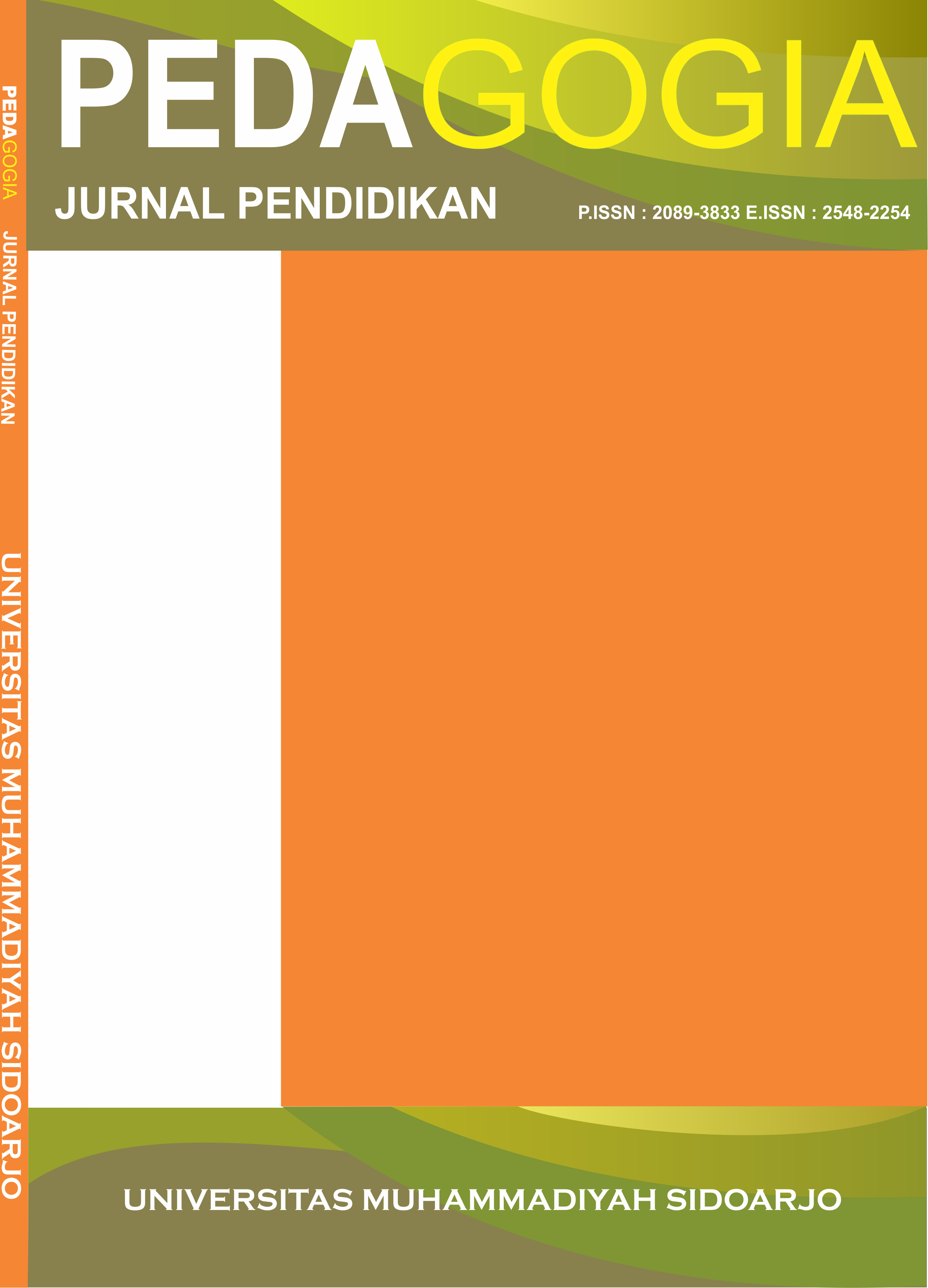Efektifitas Penggunaan Kahoot! untuk Meningkatkan Hasil Belajar Siswa
Effectiveness of Using Kahoot! to Improve Student Learning Outcomes
DOI:
https://doi.org/10.21070/pedagogia.v8i1.1866Keywords:
Kahoot!, Instructional MediaAbstract
This study aims to measure the effectiveness of the use of assessment learning media based on online games which is Kahoot to improve student learning outcomes. This study uses a quantitative approach with the quasi experiment method. The number of samples in each group is 30 people. The results shows that Kahoot can be an alternative interactive learning media in higher education because it is proven to significantly improve student learning outcomes with F (1.58) = 0.001, p <0.05 that means there are deferences between control and experiment class which is mean of experiment class (SD = 13.33, SD = 3.30) is higher than control class (M = 10.50, SD = 2.81)
References
Angraini, R. (2017). Karakteristik Media yang Tepat dalam Pembelajaran Pendidikan Kewarganegaraan sebagai Pen- didikan Nilai,. J. Moral Civ. Educ 1, 14–24
Bennett, W. L. (2008). Civic life online: Learning how digital media can engage youth (Mit Press)
Cheema, E. A. B. S. (2015). Effect of audience response sys- tem technology on learning outcomes in health students and professionals: an updated systematic review,. Int. J. Evid. Based. Healthc 13, 3–8
Fraenkel, J. R., Wallen, N. E., and Hyun, H. H. (2011). How to design and evaluate research in education (New York: McGraw-Hill Humanities/Social Sciences/Languages)
Holzinger, M. E. A. (2007). Successful implementation of user-centered game based learning in higher education: An example from civil engineering,. Comput. Educ 49, 873–890
Irwan, A. W. I. (2018). Students’ Character Training through Game Online Extracurricular E-Sports in SMA 1 PSKD High School Jakarta,. J. Moral Civ. Educ 2, 92–101
Kereluik, K., Mishra, P., Fahne, C., and Terry, L. (2014). What Knowledge Is of Most Worth: Teacher Knowledge for 21 St Century Learning Abstract,. J. Digit. Learn. Teach. Educ 29, 127–140
Kocakoyun, H. B. S. (2017). Determination of University Stu- dents’ Most Preferred Mobile Application for Gamification.,. World J. Educ. Technol. Curr. Issues 9, 18–23 Malone, T. W. (1981). Toward a Theory of Intrinsically Motivating Instruction,. Cogn. Sci 4, 333–369
Nokham, Y. C. R. (2017). The effect of Kahoot, Quizizz and Google Forms on the student’s perception in the class- rooms response system,. Econ. Sustain. Growth, ICDAMT, 178–182
Sari, F. R. A. Y. (2017). Tik Untuk Aud: Penggunaan Plat- form ‘Kahoot!’ dalam Menumbuhkan Jiwa Kompetitif dan Kolaboratif Anak,. PEDAGOGI 3
Virvou, M., Katsionis, G., and Manos, K. (2005). Combin- ing software games with education: Evaluation of its edu- cational effectiveness.,. J. Educ. Technol. Soc 8
Wang, A. I. (2015). The wear out effect of a game-based stu- dent response system,. Comput. Educ 82, 217–227
Downloads
Published
How to Cite
Issue
Section
License
Authors retain copyright and grant the journal right of first publication with the work simultaneously licensed under a Creative Commons Attribution 4.0 International License that allows others to share the work with an acknowledgement of the work's authorship and initial publication in this journal.








